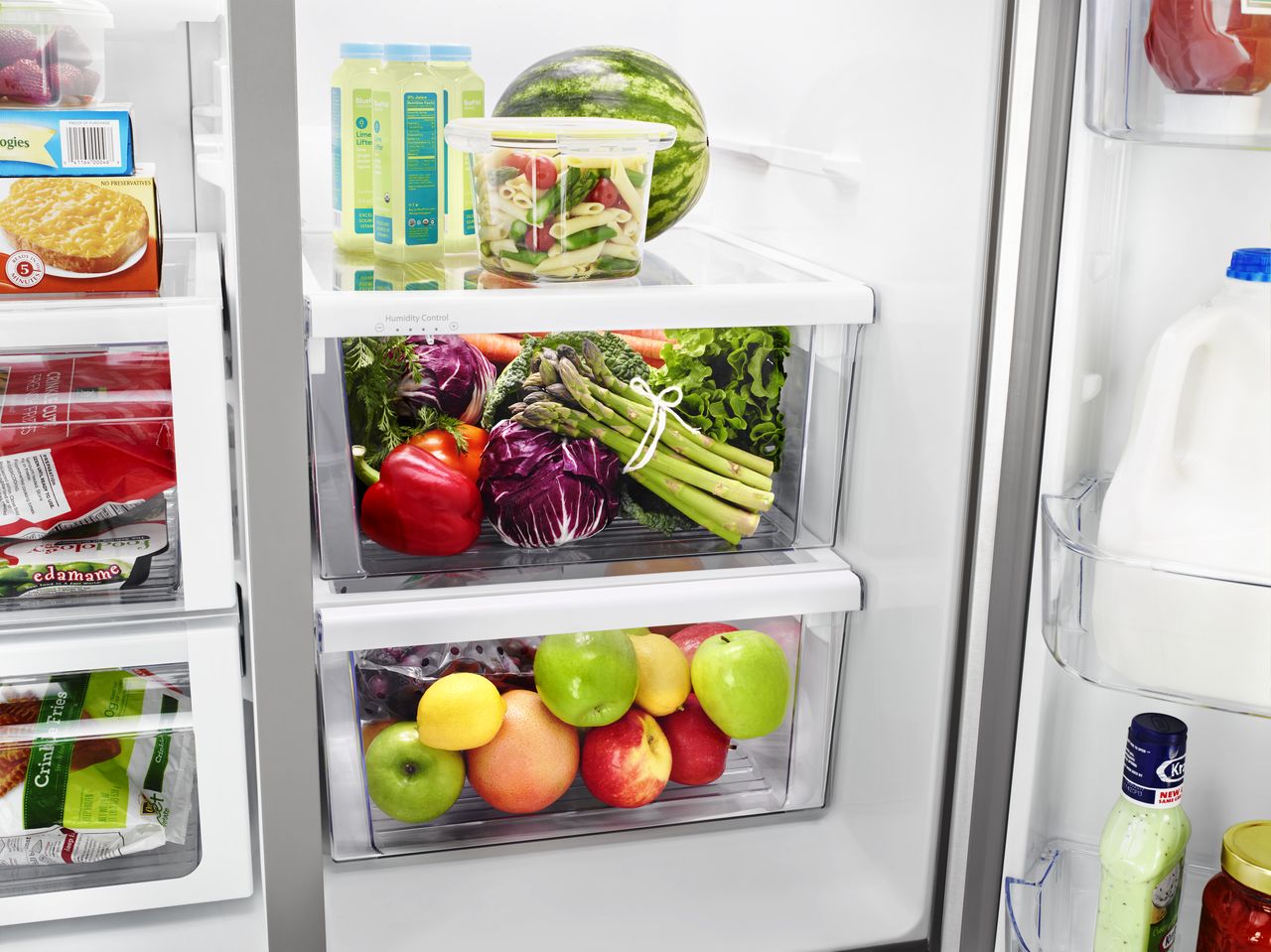
Lately, your Frigidaire refrigerator has not been cooling properly or has not been cooling at all. You’ve hoped that it was a temporary problem that would eventually correct itself but that hasn’t happened. Instead, the refrigerator cooling problems have exacerbated to the point that food products are beginning to spoil. You wonder what your next course of action should be. Should you call an appliance repair person and incur an unnecessary service call or should you attempt the repair yourself? Feeling a bit adventurous, you decide to tap into the internet’s wealth of knowledge to determine if you could, indeed, do it yourself. We truly hope this article will help you
Tools Needed:
- ¼” nut driver or a ¼” extension for your drill
- Multimeter
- Wire Strippers
- Flashlight
- Electrical Tape
- Vacuum Cleaner
To prevent accidental shock, unplug the refrigerator from its power source.
Condenser Coils
Refrigerators use a compressor to pump refrigerant through the condenser coils located near or at the bottom of the appliance and through the evaporator coils located behind the rear panel. In its gaseous form,
The Solution
You can use a coarse brush to clean the dust and dog hair from the coils. But if you don’t have a condenser coil brush, a simple vacuuming will do the trick quite nicely. We recommend performing this task at least on a quarterly basis or more frequently depending on the level of dust where you live. That way you can ensure your refrigerator remains in tip-top shape.
Fan Motor
If the fan motor is not working properly this too can prevent the refrigerator from cooling to the proper desired temperature. Air flow from the condenser fan will fail to pass over the condenser coils and can cause either an electrical or mechanical failure
The Solution
Inspect the blade for breaks or obstructions. If the fan blade checks out okay, use a multimeter to determine if the control board is able to send voltage to the motor. You’ll be testing the condenser fan motor, not the control board. If it fails the continuity test, the component must be replaced.
Defective Evaporator Fan Motor
The evaporator fan serves to draw cooling air across the evaporator coils which circulate throughout the freezer and food bin. If the fan or motor is not functioning properly frost may build on the evaporator coils and prevent cool air from entering the refrigerator
The Solution
The evaporator fan motor and coils are located behind a cover in the freezer compartment. Once you have gained access, try turning the fan blade. If the fan does not spin freely, replace the motor. You can also use a multimeter to test for continuity. If the motor tests negative for continuity, you have found the reason why your refrigerator (fresh food area) is not getting cold. The freezer may still get cold but the motor will still need to be exchanged.
Start Relay or Capacitor
Your refrigerator is equipped with either a start relay or a capacitor. The capacitor or start relay operates to provide enough voltage to get the compressor running. If the compressor is not running or is running poorly it is worth running a continuity test with your multimeter to determine its condition. Take a look at this video which explains where and how to access the capacitor or start relay.
Frosted Evaporator
As air passes over the evaporator coils, they collect frost and the buildup of frost will cause air flow interruptions. Evaporator coils require periodic defrosting. Older models need to be manually defrosted but today’s modern refrigerators use an auto defrost system which consists of a defrost heater, a defrost thermostat, and a defrost control. Depending on your model the defrost might be controlled by a defrost timer or a defrost control board. If any of these components fail, the evaporator coils will frost over causing your refrigerator to not cool.
The Solution
Use a multimeter to test the heater and thermostat for continuity to determine if voltage is travelling where it should. Please note that the thermostat needs to be tested at a temperature of 15 degrees or lower to obtain an accurate reading. If the thermostat and the heater test okay then suspect the control board as the problem and replace it.
Failed Defrost Temperature Control Board
The defrost control board does not fail often. But if testing the defrost heater and the defrost thermostat prove both are functioning properly then the control board is usually the cause of the evaporator coils frosting over
The purpose of the control board is to send the correct amount of voltage to the compressor and the fan motors. If it is not working properly the cooling system won’t cycle on. Sometimes the freezer will be cold but the fresh food bin is warm

How to Resolve the Bosch Dishwasher E15 Error Code

How to Balance a Washing Machine (5 Quick Tips)

Solutions for a Frigidaire Gas Stove Oven Failure

How to Fix a GE Ice Maker Not Working (Quick Fixes)

How to Fix the Electrolux Dryer Error Code E64

Is Your Whirlpool Ice Maker Not Working? Here’s Why

Can Styrofoam Be Microwaved? (Safety and Risks)

Agitator vs. No Agitator Washer: What’s Best?

Why Is Your Refrigerator Compressor Hot? (6 Potential Causes)

How to Use Dishwasher Pods

How to Unlock Your Microwave

How Many Watts Does a Refrigerator Use?

How To Fix a KitchenAid Dishwasher That Isn’t Draining

GE Oven F2 Error Code: Causes & Solutions

Maytag Washer Not Spinning? 5 Simple Solutions

Why Is Your Refrigerator Not Cooling?

How to Get Rid of Burnt Smell in Microwave

How to Fix a Dishwasher Not Cleaning Properly

How Much Energy Does My Dryer Use?


